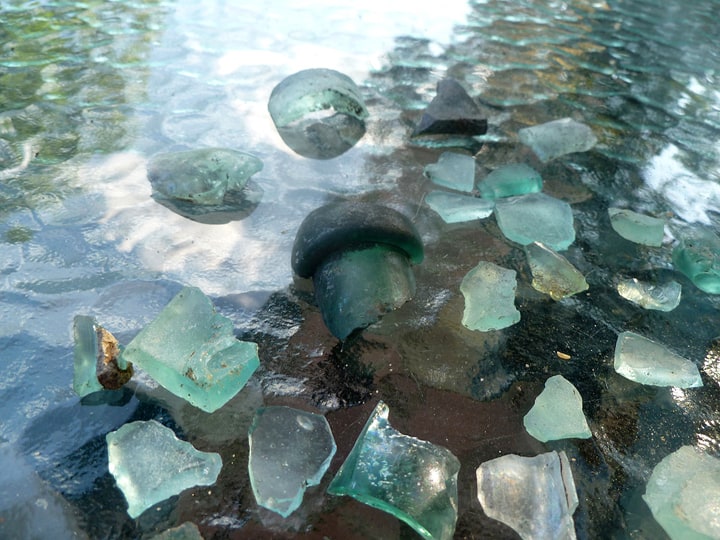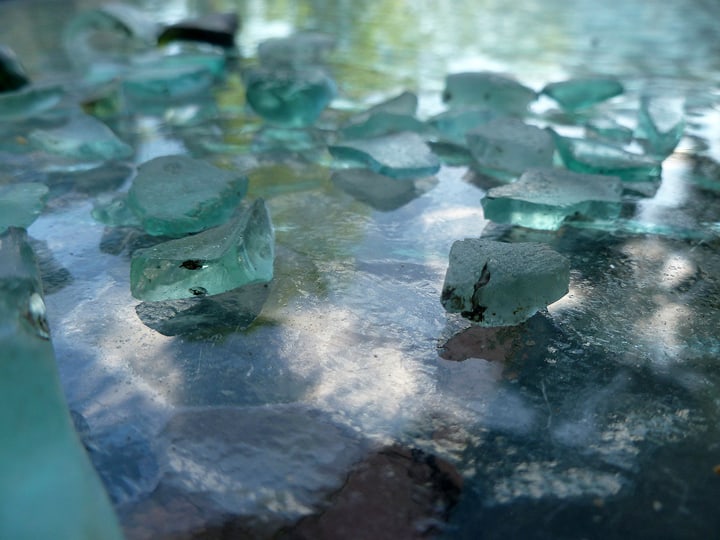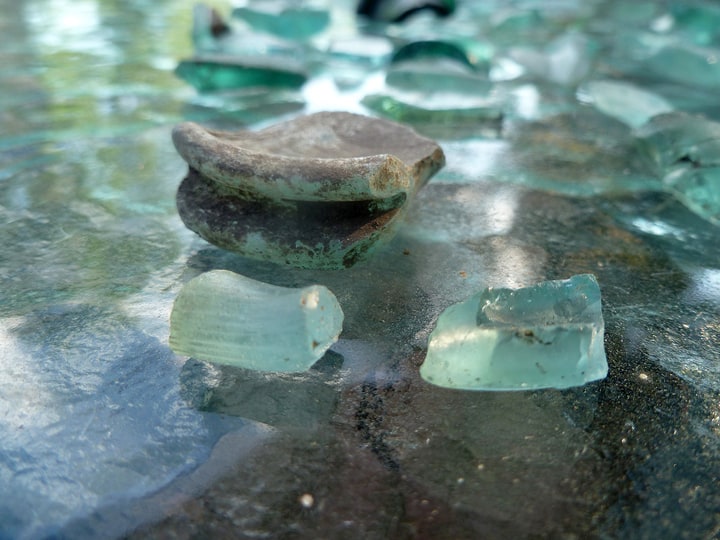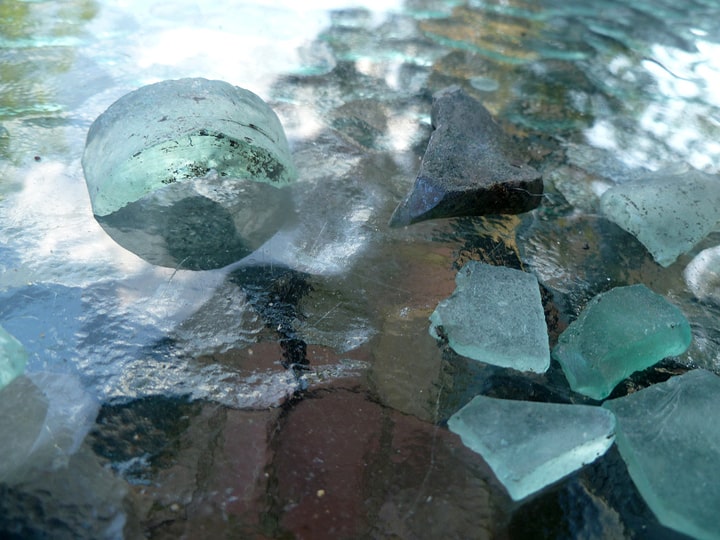Frederick Stanger and John Marshall 1831-1832
Part 1
by Stephen Atkinson
12 October 2013
Part 2: Thomas Wriggins Stanger and John Marshall 1832-1839
Part 3: The Isabella Glass works of Thomas Stanger 1841 to 1856
In 1831, John Marshall purchased land in what is now the border of Williamstown in Gloucester County and Winslow Township in Camden County, New Jersey. His daughter Elizabeth, had married Frederick Stanger’s son Phillip, who was one of the brothers that worked at Johannes Stengers (Stangers) glass works in Glassboro between 1780 and 1783.
The name of the small village where the factory was to be built was called Seven Causeways. This later was known as Brooklyn and later on as Old Brooklyn. Marshall had constructed a saw mill over the Four Mile Branch creek. He also erected a grist mill nearby and supplied it with power by damming up the Great Egg Harbor River. The two mills collectively became known as Marshall’s Mills. The grist mill failed due to a severe drought in the early 1830s. The saw mill was prosperous as heavy thick pines abound in the area.
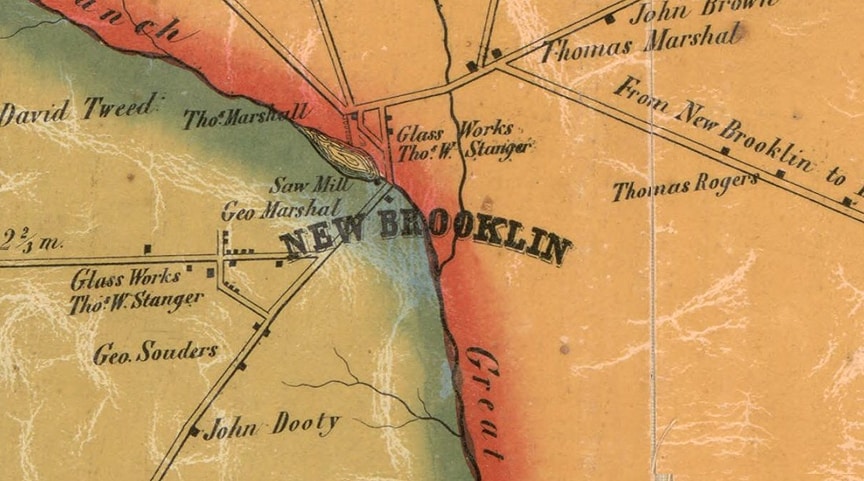
1857 Map of the village of New Brooklyn – You can see on the map above, from the year 1857, two glass works in the small village. The one in the red vein on the map is the original 1831 Thomas Stanger and John Marshall Glass works. The glass works to the left of the bold name NEW BROOKLYN are the Isabella glass works of Thomas Stanger. The glass fragments and shards shown in this article are from the first 1831 works.
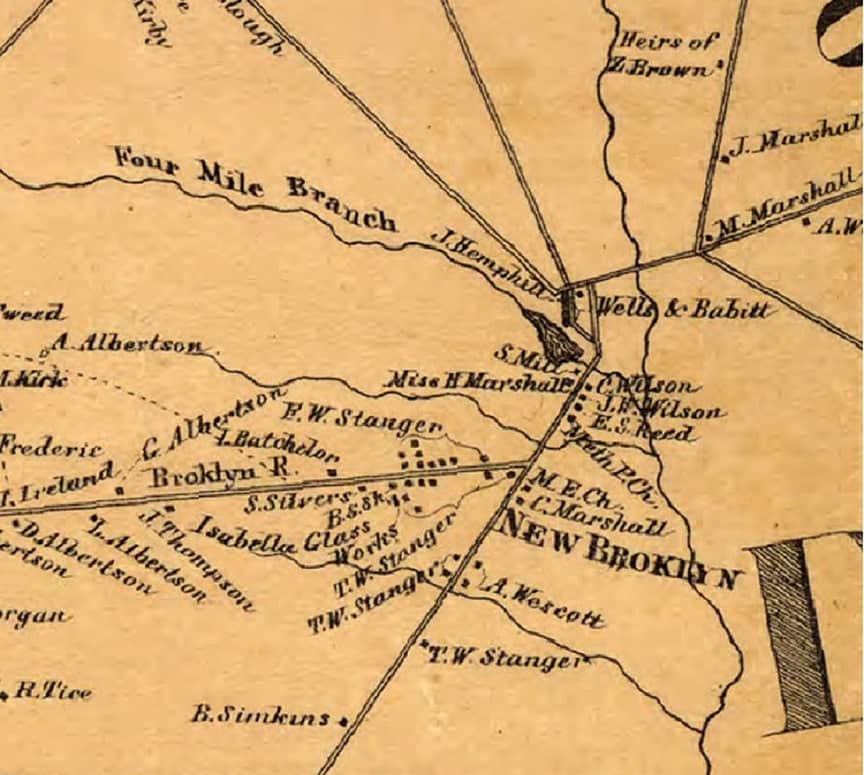
1861 map of the village of New Brooklyn – On this map from the year 1861, the northern original glass works are no longer shown and the other glass works are now called the Isabella Glass works of Thomas Stanger. Notice all of the property the Marshall and Stanger families owned. Glass factory’s were a two edged sword. They could make you rich in a instant and take it all away just as quickly.
The name Brooklyn is an anglicized name of the Dutch name Breuckelen, which was a small village in Holland, and it means a broken upland or marshy land. This description fits well with this area around New Brooklyn. About the year 1829, Marshall’s son-in-law, Frederick Stanger, began constructing a glass works between the saw mill and grist mill. He built the factory very similar to the one in Glassboro where he had worked as a 15 year old for Colonel’s Heston and Carpenter.
John Marshall was the majority owner of this partnership and Frederick Stanger was the practical glass maker who was to oversee the daily operations of the factory. Fredrick hired his second cousin Thomas Wriggins Stanger to help in the factory. Frederick’s father, Phillip and Thomas’s Grandfather Christian, were very important glass factory workers, and owner-operators from the late 1700s through the early 1800s. The first furnace was completed and ready for blast in September of 1831. The early output of this factory was window glass and utilitarian hollow ware. While on a trip to Philadelphia by stage coach, Frederick became trapped in the wilderness during a blizzard. He contracted pneumonia and soon died at the young age of 45.
The story of Frederick Stanger’s early life is a tragic one. He met his first wife Ann Marshall in Port Elizabeth while founding a glass works in 1809 with his Uncle Jacob, which his father Phillip called the Union Glass Works. It was while he resided in Cumberland County in Southern New Jersey, that he met his first wife, Ann Marshall, daughter of Randall Marshall, who bought a 1/4 interest in the Union Glass Works on June 6th, 1811.
Tragedy struck in 1815, when young Ann Marshall died giving birth to her daughter Ann. For Frederick and Randall, this was a serious blow to their well being. It was tough enough to run a glass factory early in the 19th century without having such a unfortunate an untimely death of a young wife and a daughter. It was this one event that triggered Frederick’s next move, but first he would gain another Marshall, as a father-in-law, as he would marry Elizabeth Marshall, daughter of John Marshall, Randalls brother. This marriage has made it difficult, to say the least, for genealogical historians tracing the Stanger and Marshall family roots.
Shown below are fragments of hollow ware and window glass found at the factory site in 2011 near the Atlantic City expressway. The colors found were light to dark aqua, blue aqua to a pale green to a deep blue green to a dark green and amber. Judging from the glass fragments I found, these glass works produced porter bottles, medicine vials, chestnut flasks and Demi-Johns. No charted historical flasks were thought to have been made at this factory as far as we know but they may have as workers, molds and factory ownerships changed hands quite often.
Read more from Stephen Atkinson:
Hilltown Glass Works site in Bucks County, Pennsylvania 1753-1784
The Providence Flint Glass Company 1831-1834
Caspar Wistar and The Red Rose Rent
The United Glass Company located at Wistarburgh
The Dowesburgh/Albany Glass House 1785-1815
Newburgh (Glass House Co.) 1751-1759
Glass House Farm (Glass House Co) 1758 – 1772
Brooklyn (Glass House Co.) 1754-1758
Check these T. W. Dyott bottles out!


